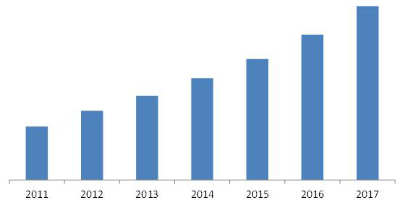
According to the market research report “Global Smart Glass market 2012-2017, by technology (Thermochromics, Liquid Crystal (LC), Suspended Particle Display (SPD), Electrochromics, Photochromic), Applications (Architectural [Commercial, Residential], Transportation [Automotive, Rail, Aviation, Marine])” published by MarketsandMarkets, the total Smart Glass market is expected to reach $3.83 billion by 2017 at a CAGR of 20.3% from 2012 to 2017.
Smart Glass Market is covering the entire market of smart glass products commercialized so far. The market is analyzed by technology types, by applications of these technologies across different verticals, and by its geographical application and penetration.
Beginning in the early 1970s, the number of research activities resulting in patenting of technologies increased rapidly, leading to the development of advanced fabrication processes, enhanced properties, and an increased number of applications across varied verticals such as construction and automotive. Tints were applied to glass to reduce heat transmission and glare, and glass coated with metal oxide films reflected heat or conducted electricity. This marked the first application of “smart glass” in automotive.
In context to the technologies, photochromic technology has not been able to gain enough commercialization in the smart glass and hence the smart windows market and the trend are likely to be persistent with the emergence of new and more energy-efficient technologies like thermochromic and electrochromic.
The company operates in more than 60 countries worldwide through its subsidiary and affiliates. The Flat Glass Division of Saint-Gobain, i.e. Saint-Gobain Vitrage, is firmly established and proactive in Europe and America and is now strengthening its presence in Asia. The high end luxury car is witnessing significant adoption of smart glasses not only as sunroof but also as side windows owing to its ability to control glare, provide shading while preserving views, and improving indoor air quality.
The industry stakeholders like glass manufacturers, window fabricators and smart film manufacturers present along the value chain are involved in partnerships and product innovation to achieve better market acceptance and hence the ROI (return on investment). The ever-inflating demand for advanced aesthetics and architectural comfort are propagating the stakeholders to achieve better market penetration.



